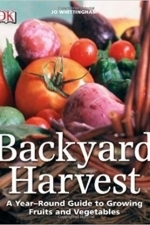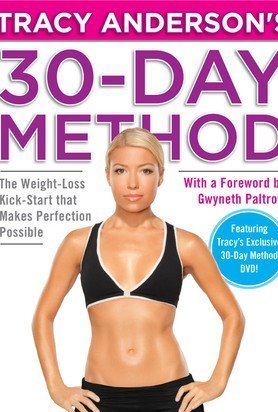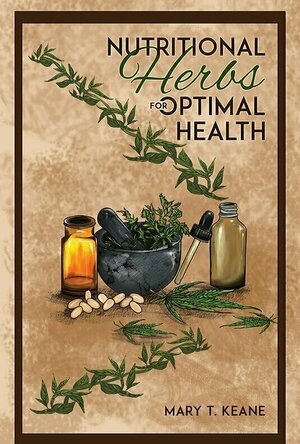Search
Haley Mathiot (9 KP) rated Knitting with Gigi in Books
Apr 27, 2018
Knitting with Gigi is an awesome kid’s book for any child (or adult!) who wants to learn to knit. There are good instructions and wonderful illustrations to help learn the basic cast-on (starting), knit stitch, decreasing (making it a different shape), and bind-off (ending). Some knitting books are very difficult to learn how to knit from, but the instructions in Knitting with Gigi are very clear. 8 kid-friendly projects make up the second half of the book, all of them easy to follow and perfect for a beginner.
Gigi also has a website where kids can join the “Gigi’s kindness corps” and knit for those in need. Her website also includes videos of instructions to get to “the next step” so to speak. The videos explain the purl stitch, different cast-on methods, and techniques of finishing. By the time a young knitter has finished the projects in the book and watched and learned the information in the videos, they will be ready to go further into the knitting world.
I want to point out a wonderful thing that Gigi (who speaks in verse) has said: “Practice makes perfect will never apply. We all make mistakes, no matter how hard we try. So be of good cheer and do not despair. With time and some care you’ll have something to wear.” Every young knitter should hear this—and experienced ones, too!
The only thing I wish this book had touched on (but didn’t mention) is gauge. Gauge is important because everyone knits differently (example: I knit loose with wool and tight with double pointed needles, so my hat or mittens or whatever else I made might not fit, even if i followed the instructions 100%) so sometimes yarn or needle changes have to be made to make sure things fit. The patterns in the book were not dependent on gauge, (which is probably why it wasn’t brought up) but it is still an important thing for any knitter to learn.
Recommendation: boys and girls ages 6+. Adults could learn to knit with their kids with this book too!
**Thank you to Martingale and Company for providing my review copy!**
Gigi also has a website where kids can join the “Gigi’s kindness corps” and knit for those in need. Her website also includes videos of instructions to get to “the next step” so to speak. The videos explain the purl stitch, different cast-on methods, and techniques of finishing. By the time a young knitter has finished the projects in the book and watched and learned the information in the videos, they will be ready to go further into the knitting world.
I want to point out a wonderful thing that Gigi (who speaks in verse) has said: “Practice makes perfect will never apply. We all make mistakes, no matter how hard we try. So be of good cheer and do not despair. With time and some care you’ll have something to wear.” Every young knitter should hear this—and experienced ones, too!
The only thing I wish this book had touched on (but didn’t mention) is gauge. Gauge is important because everyone knits differently (example: I knit loose with wool and tight with double pointed needles, so my hat or mittens or whatever else I made might not fit, even if i followed the instructions 100%) so sometimes yarn or needle changes have to be made to make sure things fit. The patterns in the book were not dependent on gauge, (which is probably why it wasn’t brought up) but it is still an important thing for any knitter to learn.
Recommendation: boys and girls ages 6+. Adults could learn to knit with their kids with this book too!
**Thank you to Martingale and Company for providing my review copy!**

Tangle Patterns Mega Pack
Reference and Entertainment
App
Learn to draw beautiful illustrations while you practice mindfulness and meditate. A must have tool...
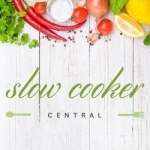
Slow Cooker Central
Food & Drink
App
Slow Cooker Central is a leading slow cooking community with over 475,000 active slow cooking...
Goddess in the Stacks (553 KP) rated Backyard Harvest in Books
Sep 8, 2017
An indispensable guide for the beginning gardener
Backyard Harvest is set up by months, which makes for a unique and absolutely essential (to me, a beginner) book. In every month, it tells you what you should be eating (provided you had planted it previously!), what you should be planting, what you should be pruning or transplanting or otherwise working on, and usually a few pages on a seasonal-appropriate subject. (A section on apples and apple trees in November, for example.) The layout is gorgeous, the instructions are easy to understand, and I feel like after a few years of following this book I’ll be eating from my garden every month of the year with ease.
For January, for example, if I had these things planted, harvested, or stored from last year, I should be eating pickles, stored root veggies, newly lifted Salsify, forced Belgian Endive, and winter radishes, among other tasty-looking things. I should be sowing (indoors, to transplant after the last frost) early-season leeks, summer onions, lettuce, broad beans, cut-and-come-again greens, and early peas and radishes. For tending, I should be amending my soil, keeping an eye on my stored fruits and veggies for signs of rot, pruning some of my fruit trees, and picking up fallen leaves from hardy winter brassicas so they don’t cause rot at the base of the plants. The feature for the month is building a seedbed, both raised and non. In January I should be harvesting celeriac, early broccoli, the aforementioned Belgian Endive, and spring greens. Another feature for the month is sprouting seeds for use in salads. Each of these categories gets its own two-page spread, the monthly features occasionally getting four or more.
It’s a lovely, really useful book, and one I HAD to own after getting it from the library. It will be getting heavy use in the coming months, I’m sure!
Whittingham has written or co-written three other books – Vegetable Gardening and Grow Vegetables before this book, and Simple Steps to Success: Fruit and Vegetables in Pots after. The latter appears to be a combination of the first two in a new format, but I could be wrong. So I’m not sure I’d recommend any of those three – I haven’t read them – but Backyard Harvest is awesome!
You can find all my reviews at http://goddessinthestacks.wordpress.com
For January, for example, if I had these things planted, harvested, or stored from last year, I should be eating pickles, stored root veggies, newly lifted Salsify, forced Belgian Endive, and winter radishes, among other tasty-looking things. I should be sowing (indoors, to transplant after the last frost) early-season leeks, summer onions, lettuce, broad beans, cut-and-come-again greens, and early peas and radishes. For tending, I should be amending my soil, keeping an eye on my stored fruits and veggies for signs of rot, pruning some of my fruit trees, and picking up fallen leaves from hardy winter brassicas so they don’t cause rot at the base of the plants. The feature for the month is building a seedbed, both raised and non. In January I should be harvesting celeriac, early broccoli, the aforementioned Belgian Endive, and spring greens. Another feature for the month is sprouting seeds for use in salads. Each of these categories gets its own two-page spread, the monthly features occasionally getting four or more.
It’s a lovely, really useful book, and one I HAD to own after getting it from the library. It will be getting heavy use in the coming months, I’m sure!
Whittingham has written or co-written three other books – Vegetable Gardening and Grow Vegetables before this book, and Simple Steps to Success: Fruit and Vegetables in Pots after. The latter appears to be a combination of the first two in a new format, but I could be wrong. So I’m not sure I’d recommend any of those three – I haven’t read them – but Backyard Harvest is awesome!
You can find all my reviews at http://goddessinthestacks.wordpress.com
Tracy Anderson's 30-Day Method
Genre: Exercise
ISBN: 9780446562041
Published:September 20th 2010 by Grand Central Life & Style
Rating: 4.5
When reviewing fitness books, I look for books that tell the reader how to fully use their bodies. I really like Anderson's method for two reasons:
1. She knows muscles. She knows how they work, she knows how to train them. In the book, the concept of using certain muscles to perform an exercise is clearly explained. This is a crucial part of muscle training.
2. She had a good balance between aerobic exercise and anaerobic exercise, and she has put them together in a good way.
Anderson was a dancer, she also took Pilates (the right way) and I could see both of those influences in her method. Don't get scared away by that—even if you've never seen the inside of a ballet studio, you'd be just fine working her method! But there is a reason that it is said that dancers are the athletes of God: because they are. Combining cardio (aerobic exercise) with Pilates (conditioning) and dance (alternating engage-disengage exercise to increase stamina) is the perfect combination for weight loss and muscle toning.
Now how to get there if you have never experienced any of that?
Anderson breaks the book down into different sections. The exercise portion, where she fully explains every stretch, position, and movement, is well described for the absolute beginner. More athletic users or advanced athletes would benefit also, but they wouldn't have to read the descriptions of the movements in their entirety.
The DVD is very good: It features Anderson working the exercises in the book enough time to hear the description, see all the details, and do it yourself.
There is also a section in the book with some great meals. The first section is a very thorough introduction that I do not recommend skipping! You'll learn tons about your body! I was also amazed at how much research Anderson did to create this method.
The only thing I don't like: The cardio routine has no verbiage. I expected some talking, either voiceover or real time, with some counting or some description of what you should be doing. However, it was just music and Anderson dancing. It would take me, who has been dancing for almost five years, two or three times doing the DVD to get the combination. It would be a lot more difficult and confusing for someone who doesn't have practice taking what they see and converting it for themselves.
The other thing I wanted to see more of was proper stretching techniques. I honestly have yet to find a book that explains how to properly stretch without injury (it is possible!). My recommendation to anyone who uses this awesome program: stretch well. Stretch correctly. Get a dancer or a sports doctor to give you advice if you need it.
Recommendation: Ages 14+ for anyone serious. This program takes time, energy, and commitment. If you can't commit to about two hours of your day, it's not for you. If you use the program, make sure you follow instructions very carefully to avoid injury! doing exercises incorrectly is a very fast way to end up in the physical therapists office (I can tell you that from personal experience, though not experience from this book).
Genre: Exercise
ISBN: 9780446562041
Published:September 20th 2010 by Grand Central Life & Style
Rating: 4.5
When reviewing fitness books, I look for books that tell the reader how to fully use their bodies. I really like Anderson's method for two reasons:
1. She knows muscles. She knows how they work, she knows how to train them. In the book, the concept of using certain muscles to perform an exercise is clearly explained. This is a crucial part of muscle training.
2. She had a good balance between aerobic exercise and anaerobic exercise, and she has put them together in a good way.
Anderson was a dancer, she also took Pilates (the right way) and I could see both of those influences in her method. Don't get scared away by that—even if you've never seen the inside of a ballet studio, you'd be just fine working her method! But there is a reason that it is said that dancers are the athletes of God: because they are. Combining cardio (aerobic exercise) with Pilates (conditioning) and dance (alternating engage-disengage exercise to increase stamina) is the perfect combination for weight loss and muscle toning.
Now how to get there if you have never experienced any of that?
Anderson breaks the book down into different sections. The exercise portion, where she fully explains every stretch, position, and movement, is well described for the absolute beginner. More athletic users or advanced athletes would benefit also, but they wouldn't have to read the descriptions of the movements in their entirety.
The DVD is very good: It features Anderson working the exercises in the book enough time to hear the description, see all the details, and do it yourself.
There is also a section in the book with some great meals. The first section is a very thorough introduction that I do not recommend skipping! You'll learn tons about your body! I was also amazed at how much research Anderson did to create this method.
The only thing I don't like: The cardio routine has no verbiage. I expected some talking, either voiceover or real time, with some counting or some description of what you should be doing. However, it was just music and Anderson dancing. It would take me, who has been dancing for almost five years, two or three times doing the DVD to get the combination. It would be a lot more difficult and confusing for someone who doesn't have practice taking what they see and converting it for themselves.
The other thing I wanted to see more of was proper stretching techniques. I honestly have yet to find a book that explains how to properly stretch without injury (it is possible!). My recommendation to anyone who uses this awesome program: stretch well. Stretch correctly. Get a dancer or a sports doctor to give you advice if you need it.
Recommendation: Ages 14+ for anyone serious. This program takes time, energy, and commitment. If you can't commit to about two hours of your day, it's not for you. If you use the program, make sure you follow instructions very carefully to avoid injury! doing exercises incorrectly is a very fast way to end up in the physical therapists office (I can tell you that from personal experience, though not experience from this book).
Night Reader Reviews (683 KP) rated Nutritional Herbs for Optimal Health in Books
Feb 4, 2020
Honest Review for Free Copy of Book
Nutritional Herbs for Optimal Health by Mary T. Keane is an extremely short handbook detailing a select few herbs and their usefulness for nutrition and health. Though the serious herbalist will want a bigger, more detailed guide this is a nice quick reference or introductory book for the beginner.
Herbs have been used for centuries for their medicinal and nutritional properties. In fact they were the first form of medicine we had long before our current manufactured medicine became a thing. This book details the way some herbs used to be used before modern medicine took over and how they may still be used today. It also covers some of the illnesses people of today face and the deficiencies that cause them. It explains why and how specific herbs can help with some of these illnesses.
While the book has a large focus on Nettles (yes that stinging plant that many outdoors families were taught to avoid, at least where I live) for arthritis and kelp for the heart and thyroid other useful plants were mentioned. Comfrey will be a herb that many readers will want to keep on hand after learning about how it can speed up healing wounds significantly. Those prone to nausea will learn to keep Dandelion on hand and some Yaroow for toothaches and those hemorrhoids no one ever want to talk about. Don’t know how to properly use, prepare, or administer these herbs? Don’t worry all that is covered as well.
I really enjoyed how the author went into the historic uses of some of the herbs mentioned. It was especially interesting to learn how Stinging Nettle would directly be hit on the skin of a person suffering from Arthritis to increase circulation in order to reduce pain. I was disapointed that there was not a larger range of herbs mentioned. The book only talks about around twenty-three herbs total and some of those only got one short paragraph. Alos out of those few herbs mentioned only and a handful have pictures with them. Finally, my last complaint is that it talks about specific mineral or element deficiencies that can be treated with herbs more than the herbs themselves.
To be completely honest the only people who are going to really enjoy this book are health-conscious adults. This is largely because of the informative topic and the fact that this book is more of a handbook or guide. I rate this book 2 out of 4. While I did enjoy the information in this book it felt like there wasn’t that much offered. The lack of images and diversity of the herbs mentioned was a real let-down from me. Between that and the author frequently referring to or mentioning other books she wrote this book felt more like a teaser or sample and not the full thing.
https://nightreaderreviews.blogspot.com
https://facebook.com/nightreaderreviews
Herbs have been used for centuries for their medicinal and nutritional properties. In fact they were the first form of medicine we had long before our current manufactured medicine became a thing. This book details the way some herbs used to be used before modern medicine took over and how they may still be used today. It also covers some of the illnesses people of today face and the deficiencies that cause them. It explains why and how specific herbs can help with some of these illnesses.
While the book has a large focus on Nettles (yes that stinging plant that many outdoors families were taught to avoid, at least where I live) for arthritis and kelp for the heart and thyroid other useful plants were mentioned. Comfrey will be a herb that many readers will want to keep on hand after learning about how it can speed up healing wounds significantly. Those prone to nausea will learn to keep Dandelion on hand and some Yaroow for toothaches and those hemorrhoids no one ever want to talk about. Don’t know how to properly use, prepare, or administer these herbs? Don’t worry all that is covered as well.
I really enjoyed how the author went into the historic uses of some of the herbs mentioned. It was especially interesting to learn how Stinging Nettle would directly be hit on the skin of a person suffering from Arthritis to increase circulation in order to reduce pain. I was disapointed that there was not a larger range of herbs mentioned. The book only talks about around twenty-three herbs total and some of those only got one short paragraph. Alos out of those few herbs mentioned only and a handful have pictures with them. Finally, my last complaint is that it talks about specific mineral or element deficiencies that can be treated with herbs more than the herbs themselves.
To be completely honest the only people who are going to really enjoy this book are health-conscious adults. This is largely because of the informative topic and the fact that this book is more of a handbook or guide. I rate this book 2 out of 4. While I did enjoy the information in this book it felt like there wasn’t that much offered. The lack of images and diversity of the herbs mentioned was a real let-down from me. Between that and the author frequently referring to or mentioning other books she wrote this book felt more like a teaser or sample and not the full thing.
https://nightreaderreviews.blogspot.com
https://facebook.com/nightreaderreviews
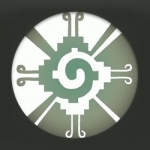
13:20:Sync
Navigation and Reference
App
This app puts the Mayan Dreamspell Calendar in your pocket! "13:20:Sync makes it so much easier to...

